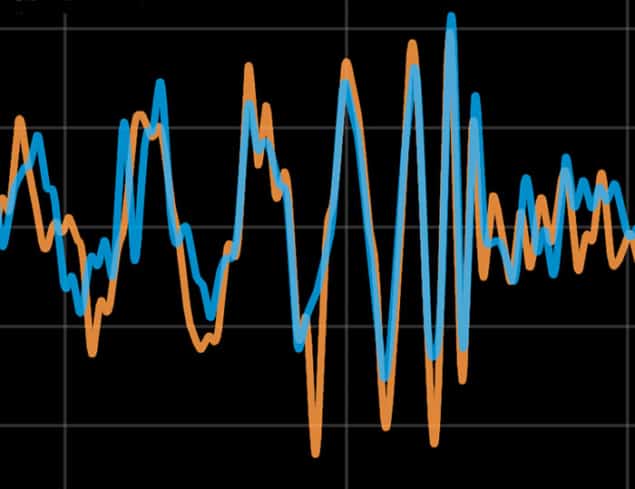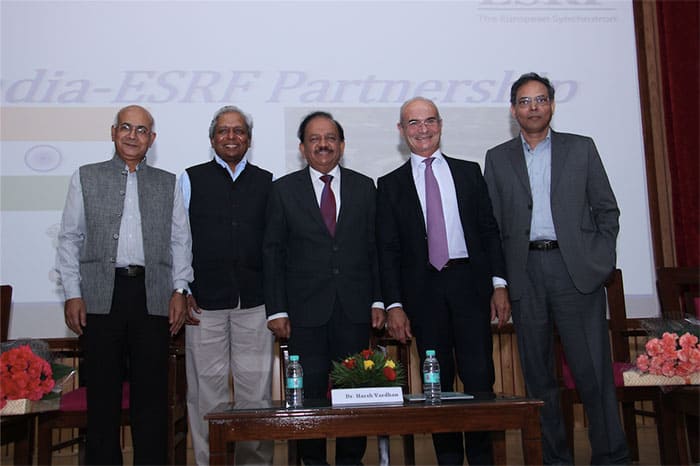Flash Physics is our daily pick of the latest need-to-know developments from the global physics community selected by Physics World‘s team of editors and reporters

Gravitational-wave detections are not correlated noise, says LIGO physicist
A physicist working on the LIGO gravitational-wave detectors has responded to a claim by physicists in Denmark that LIGO’s first-ever detection of a gravitational wave in September 2015 may not have actually occurred. Last week, James Creswell, Sebastian von Hausegger, Andrew Jackson, Hao Liu, and Pavel Naselsky of the Niels Bohr Institute in Copenhagen posted their own analysis of LIGO data on the arXiv preprint server. Their work suggests that the noise in LIGO’s two detectors is correlated. Furthermore, they point out that the time delay associated with the correlation is the same as the time it should take for a gravitational wave to propagate between the detectors, which are more than 3000 km apart. Detecting the same wave in two detectors with the appropriate time delay plays a crucial role in identifying gravitational waves from background noise. As a result, Creswell and colleagues suggest that the September detection (and two subsequent detections) could simply be correlated noise. Not so, says LIGO member Ian Harry of the Max Planck Institute for Gravitational Physics in Potsdam-Golm, who has responded in a blog. Harry says that the noise correlations seen by the Danish team are related to an error in how they analysed the data and that the noise correlations reported by Creswell and colleagues do not exist.
Optical stretching deactivates white blood cells

Immune cells can be deactivated by optically stretching them, according to physicists and medics. Andrew Ekpenyong of Creighton University in the US and colleagues were studying the stiffness of neutrophils – a type of white blood cell – when they accidentally discovered the unusual property. In the body, neutrophils are the first to respond when a foreign object invades. The alien presence activates the cells, causing them to change from smooth and round to rough and irregular. It can then take between 40–120 min for the cells to return to their resting state. Although designed to fight illness, neutrophils can cause life-threatening problems. For example, in acute lung injury (ALI) and acute respiratory distress syndrome (ARDS), activated neutrophils can become stuck in the lungs’ tiny capillaries. To study the cells, Ekpenyong and team used an optical stretcher – a dual-beam laser that transfers photon momentum to an object’s surface to trap and deform it without the need for direct contact. “Just for a bit of fun,” Ekpenyong stretched an activated cell and discovered that the mechanical deformation triggered deactivation. Indeed, the team found repeated stretching can return an activated cell to its resting state within 60 seconds – two orders of magnitude faster than natural deactivation. The researchers confirmed the mechanical effect using a microfluidic microcirculation mimetic (MMM) that mimics capillary constrictions in the body. The team hopes to translate the findings, presented in Science Advances, into a clinical application.
India joins European synchrotron as 22nd partner nation

India has become the 22nd country to be a partner in the European Synchrotron Radiation Facility (ESRF) in Grenoble, France. India will contribute 0.66% of the ESRF budget and its scientists will have access to the facility for “non-proprietary research” with a focus on structural biology. At a signing ceremony today in New Delhi, ESRF Director General Francesco Sette says: “I’m very pleased and honoured by the decision of India to join the ESRF, and in particular, its forefront structural biology programme.” He added: “The ESRF community will greatly benefit from the collaboration with the vibrant Indian scientific community.” Sudhanshu Vrati of the Regional Centre for Biotechology in Faridabad signed on behalf of India and says: “I’m confident that this new agreement will lead to exciting new discoveries and nucleate other scientific collaborations between India and Europe.” Indian scientists had used a beamline at ESRF in 2009–2016 under a memorandum of understanding that has resulted in the publication of more than 400 scientific papers on macromolecular crystallography.



